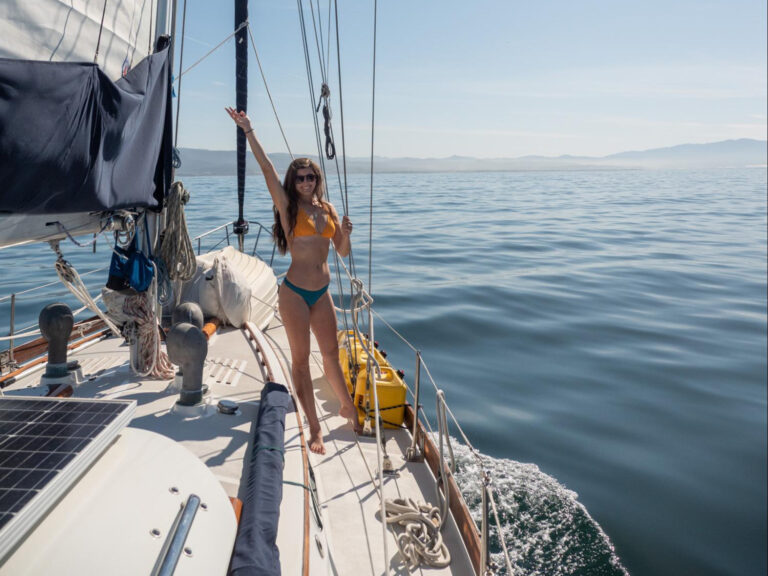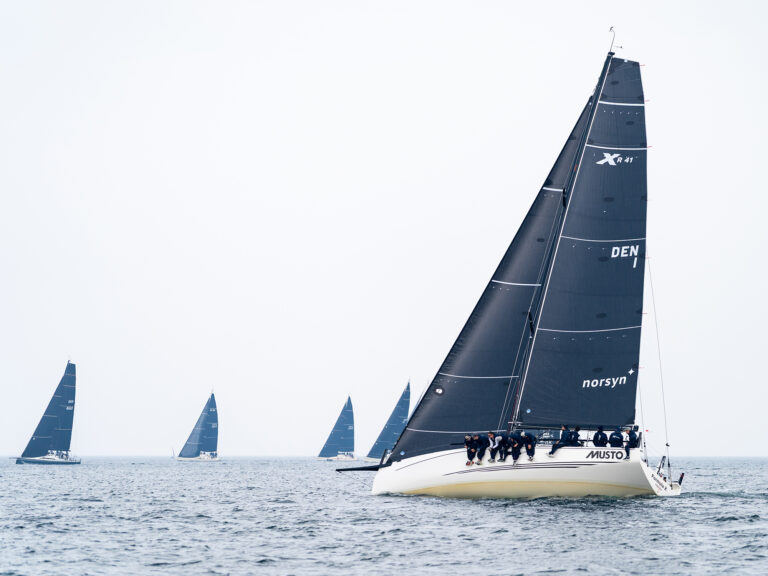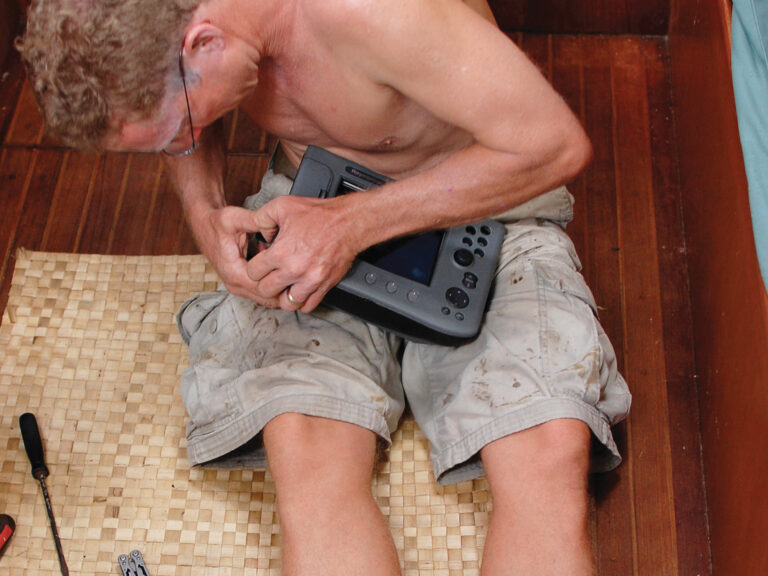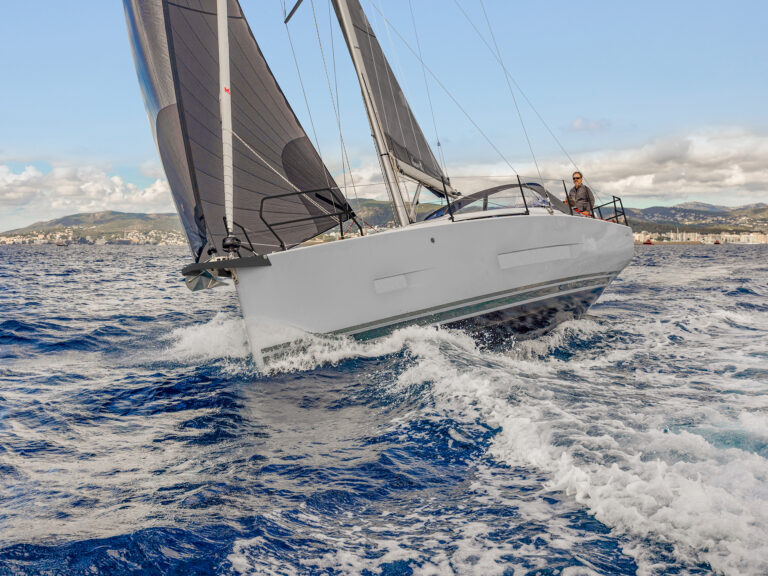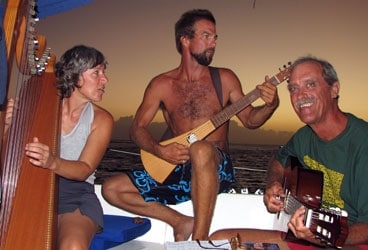
cat musicians 368
I confess: I’m still a monohull sailor. It’s been more than a decade since my husband, Jim, and I set sail from Annapolis, Maryland, aboard our Tayana 42, Asylum. In the early years of our voyage, the cruising world pretty much consisted of monohulls, and we rarely saw cruising catamarans. Lately, though, we’ve noticed that cats are becoming more prevalent among the international cruising fleet. We’ve even stopped in a couple of South Pacific anchorages in which there’s been an equal number of cats and monohulls-proportions unheard of in the past. One surprising fact that we’ve discovered is how many of these current cat owners started out as monohull sailors. Many actually set out cruising on monohulls, reconsidered for various reasons, then swapped the monohulls for multihulls and never looked back.
John and Susan Fisher left North Carolina in November 2005 on a “leisurely, no-schedule circumnavigation” aboard their Shannon 51 monohull, Morning Star, and were on their way to Panama before the catamaran bug bit. “We were anchored in the Rio Dulce near this big, sexy cat,” says Susan. Javelin, it turned out, belonged to Chris White, the well-known catamaran guru who wrote The Cruising Multihull. He invited them aboard the Atlantic 55. “We were wowed,” Susan recalls, eyes still wide at the memory. “And we continued to look at cats on the way to Panama.” They decided to return to Fort Lauderdale, where they found a Chris White-designed Superior 54 that’s now called Silkie. They sailed Morning Star back to Florida to sell, restarted their trip, and became evangelical about the conversion.
Ask any catamaran convert what it is about cats, and the answer is almost always the same: livability. John Fisher, a former professor of civil engineering, adds these: stability of the platform under way and in rolly anchorages (“You had a rolly night? We didn’t feel a thing!”); more speed under power; and superior performance in light air and downwind, the very circumstances, he points out, that one mostly encounters on a circumnavigation. So far, he hasn’t missed all the spare parts, extra chain, and other gizmos he jettisoned to achieve the right stuff-to-weight balance that cats demand; Susan, a family lawyer, doesn’t mind not lugging around two tons of canned goods in exchange for “being able to move about so much more easily when under way.” It’s almost impossible to coax it out of him, but John does allow that paying a premium for all that beam when parked in a marina is one downside-but only a small one, he insists, when you consider how much more comfortable you are.
Cruisers from Iowa are still about as rare as bluewater catamarans used to be, but David and Gail Funk had a plan: work for five more years, retire from their electronics and computer-education careers in Cedar Rapids, outfit their Beneteau 44, Fifth Season, which was earning her keep in charter in the British Virgin Islands, and go cruising. One day, Dave and Gail attended a presentation about a family who’d just completed a three-year circumnavigation on a catamaran.
“What stuck in my head,” Dave says, “was a photo of them doing a project on a flat table while under way.” Next stop for the Funks? The Newport, Rhode Island, boat show. They bought Fifth Season II, a Fountaine Pajot Venezia 42, which, like her predecessor, went to work in a charter fleet until cruising time.
Back in Iowa, while Dave was thinking “Workspace!,” Gail was thinking “Bigger harp!” Of all the reasons to cruise on a cat, this may be the best: It’s the perfect boat for a woman who loves to sing for her supper while accompanying herself on the harp. Perhaps Dave’s most important project before setting sail in January 2002 was to build Gail a full-size harp to replace the miniature she’d planned to carry on the monohull. The harp even has its own berth! Paddle by the boat and you’ll hear her plucking away in the cockpit of Fifth Season II, where she loves jamming with fellow musicians. That cavernous cockpit serves not only as a rehearsal hall but also as the gathering spot for the potluck dinners, meetings, and happy hours that the Funks also love to host.
A few months after Dave and Gail left the B.V.I. in the middle of 2002, Ron Bruce and Joanne Bush, halfway through their 18-month circumnavigation of the Caribbean aboard their Morgan 43 monohull, Footloose, met the Funks in Grenada and spent a leisurely day of angling on Fifth Season II. “I was stunned at the comfort and space,” says Joanne, who didn’t sail before she set out to cruise aboard Footloose and, at that time, wasn’t at all convinced that it’d be her cup of tea. Ron was an avid sailor with racing in his blood and circumnavigating in his dreams, so his eyes lit up when Joanne, once they were back in Pensacola, mused, “You know, if we had a cat, I’d go back out.” The search was on! In the Bahamas, they found a PDQ Antares 42, named her Miss Jody after Joanne, and sailed away from Pensacola in December 2005 to head west toward Ron’s dream.
“We’ll take it one day at a time,” he promised Joanne. “If you don’t like it, I’ll buy you a bus ticket home.”
The transition from monohull racer to cat cruiser was no problem, says Ron, a guy who’d easily transitioned from mechanical engineer to bank president in his working days. “The biggest difference,” he says, “is that a cat doesn’t tell you when it’s overpowered like a monohull does, so you need to pay close attention to the wind, the sea state, and the sails.” To a seasoned sailor, of course, that’s no problem; it’s just good seamanship. For Joanne, there’s no debate: “It’s a cat all the way because of the comfort.” The former social worker, now a full-time shell collector, loves all that space both for showing and stowing her treasures and for guests. Ron likes the space, too, “but weight is an issue,” he says. “If you fill up all that room, the boat bogs down. Still, I have every tool I own and enough spares to build three engines!” Joanne has been won over; no trips have been made to the bus station.
Unlike her husband, Clint, who comes from a long line of monohull sailors, Adair Bush doesn’t feel excitement when wind grips the sails and the rail dips into the water. Actually, she shudders at the thought. Nonetheless, in December 2005, these two Floridians left their practices-he tended to people’s bones; she tended to small animals-and headed down the Thorny Path to cruise aboard their Offshore 40 monohull, Emmanuel. By Trinidad, however, Emmanuel was manifesting many symptoms of trouble, and the diagnosis was clear: Adair was through. “I need a boat that I feel safe on,” she says. Unwilling to abandon their planned circumnavigation, they remembered a suggestion from Clint’s partner, which they’d dismissed at the time: Get a catamaran. A little Internet research and some chatting with salts who’d sailed both cats and monohulls convinced the couple that the idea wasn’t half-baked at all. The perfect cat was for sale in Trinidad, a Jeff Allen-designed Ferrel 47. In short order, the new Emmanuel was on her way west with a very happy crew.
“I’ve never been afraid on this boat,” says Adair. “I don’t worry about Clint falling overboard when he goes up to reef.” Clint says that repairs are now easier to make, and with their cat’s high bridgedeck and almost 360 degrees of windows, it’s easier for the crew to keep an eye on the horizon from the saloon than it was from below in a monohull. Most important, he adds, is that “this boat won’t sink.” Emmanuel’s saloon table seats eight without a squeeze and swings out so that nobody has to scooch around in that awkward crouch all sailors know to get to a seat in the middle. The galley is bigger than kitchens in most New York apartments, and even when holding four huge boxes of clothes for the village kids in Vanuatu, there’s still room to stow a Smart car below.
The more that Jim and I spend time on our friends’ cats, the more I like them. So what that you have to park two hulls and maintain two engines? There’s something to be said for cans and plates that don’t fling themselves out of lockers-and for the guys being able to stroll to the loo while under way, and then, when they get there, standing up straight rather than hanging on at a 20-degree angle and impersonating a water fountain. For now, Asylum remains secure in her position as our home and trusted traveling companion. But if I were to start over, I might just be a catamaran convert myself.
Katie Coolbaugh, formerly a social researcher, and her husband, Jim, are currently sailing from Vanuatu to the Solomon Islands. They’re exploring the Pacific at the same pokey pace that they used to get there, wondering all the while what it’d be like to be doing it on a catamaran.




